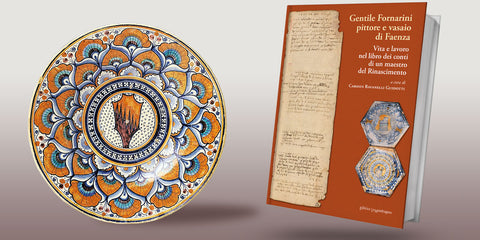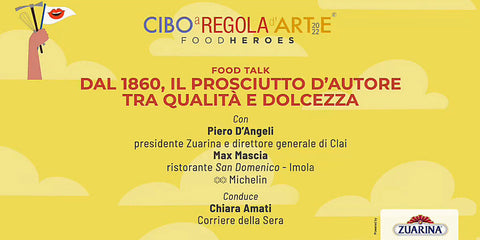Presentation in Faenza of the important volume edited by Carmen Ravanelli Guidotti and published by "La Mandragora" types, thanks to the support of CLAI.
On Friday, May 20 at 5 p.m. at the Cinema Teatro Sarti in Faenza will take place the presentation of the volume Gentile Fornarini painter and potter of Faenza - Life and work in the account book of a Renaissance master, edited by Carmen Ravanelli Guidotti, with contributions by Lucio Donati, Valentina Mazzotti, Corina Mezzetti, M. Roberta Stanzani and Marcella Vitali, for La Mandragora Publishers of Imola. The event, open to the entire city, will be attended by authorities and experts.
"The Cooperativa Lavoratori Agricoli Imolesi, CLAI is honored to have supported this cultural operation on the occasion of the 60th anniversary of the founding of our singular enterprise," clarifies Giovanni Bettini, President CLAI , "singular because of the values that have characterized its path since its origin, men and women committed to building an authentically cooperative enterprise, with the person, the member and his or her desire for happiness at the center of their actions, which also contemplates the love of culture and beauty.
This work is an original contribution of the highest value for the Faenza community," Bettini continues, "unveiled through the reconstruction of the human adventure of Gentile Fornarini a master of the Renaissance. Therefore, credit must be given to Dr. Carmen Ravanelli Guidotti for combining the specific knowledge and scientific skills proper to artistic ceramics, recognized in the international field, with a considerable dose of courage and tenacity, which I had the privilege of appreciating in person, in embarking on an adventure of such great commitment, such as the publication of this 'work that the scholar, Conservator Emerita of the International Museum of Ceramics MIC, dedicates to the City of Faenza."
Faenza, in addition to timeless majolica masterpieces, can boast an extraordinary if not unique document in the Renaissance: the account book ("vacchetta") of Gentile di Antonio Fornarini, a painter and potter active in the second half of the 15th century.
Its unabridged publication had been awaited for years by devotees of the subject, and now this monographic volume of no less than 337 pages makes available the photographic reproduction of the original in near-facsimile format and the related critical edition, complete with explanatory notes.
In addition to these fundamental aspects, the work, which is divided into two parts, is accompanied, in the first, by a number of contributions that aim to relate the figure of the master to the framework of the city context of the second half of the 15th century, as well as to derive a glimpse of the everyday life of a craftsman of the second half of the 15th century in Faenza, bringing to light, as it were, the family side of his life.
In order, news about the acquisition of the manuscript in the Library of the International Museum of Ceramics is presented (Valentina Mazzotti); a profile of Faenza's artistic culture in the second half of the 15th century follows (Marcella Vitali); then the artistic culture is expanded with a picture of Faenza and the countryside (Lucio Donati). This first part is completed with two contributions (Carmen Ravanelli Guidotti), contextual essayistic contributions that focus not only on the figure of the potter of the time, but also on aspects of Gentile's daily life.
The second part of the volume, entirely devoted to the manuscript and its documentary apparatus (the heart of this work, which houses the photographic reproduction and transcription of the vacchetta) opens with a significant philological examination (Corinna Mezzetti), which is followed by the photographic reproduction in almost facsimile dimensions that has the advantage of returning a visually real image of the original. The photographic reproduction is succeeded by the critical edition (Carmen Ravanelli Guidotti), structured with notes and contextual apparatus, to facilitate the understanding of the text and thus a fluent reading.
This is followed by an Appendix (Lucio Donati and Carmen Ravanelli Guidotti), which collects according to chronological order a number of documents in order to attest the presence of Maestro Gentile and his relatives in the Faentine environment of the time, and a Report on the conservative restoration of the manuscript (Roberta Stanzani). Finally, the volume concludes with an articulate apparatus of Analytical Indexes.
Gentile's reading of the master cowherd restores and consolidates the image of an independent craftsman, capable of dividing his time between painting and applied arts, of a craftsman-commercialist able to actively place himself in relationship with his world between supply and demand, thus emblematically representing the versatile mindset of a master of the Italian Renaissance.










